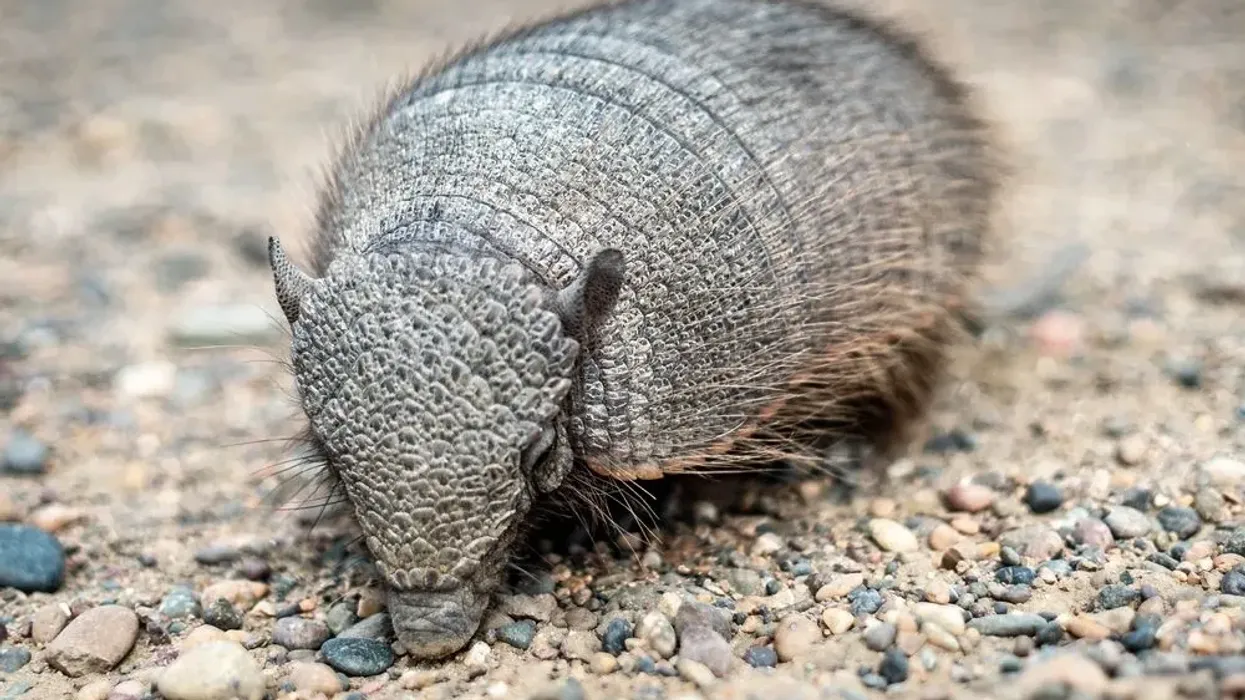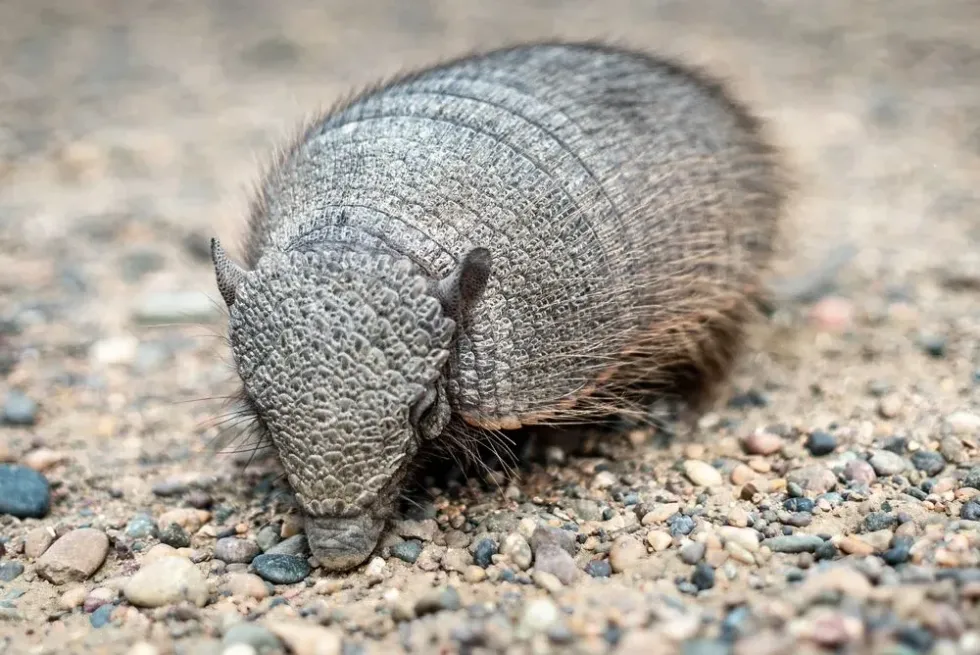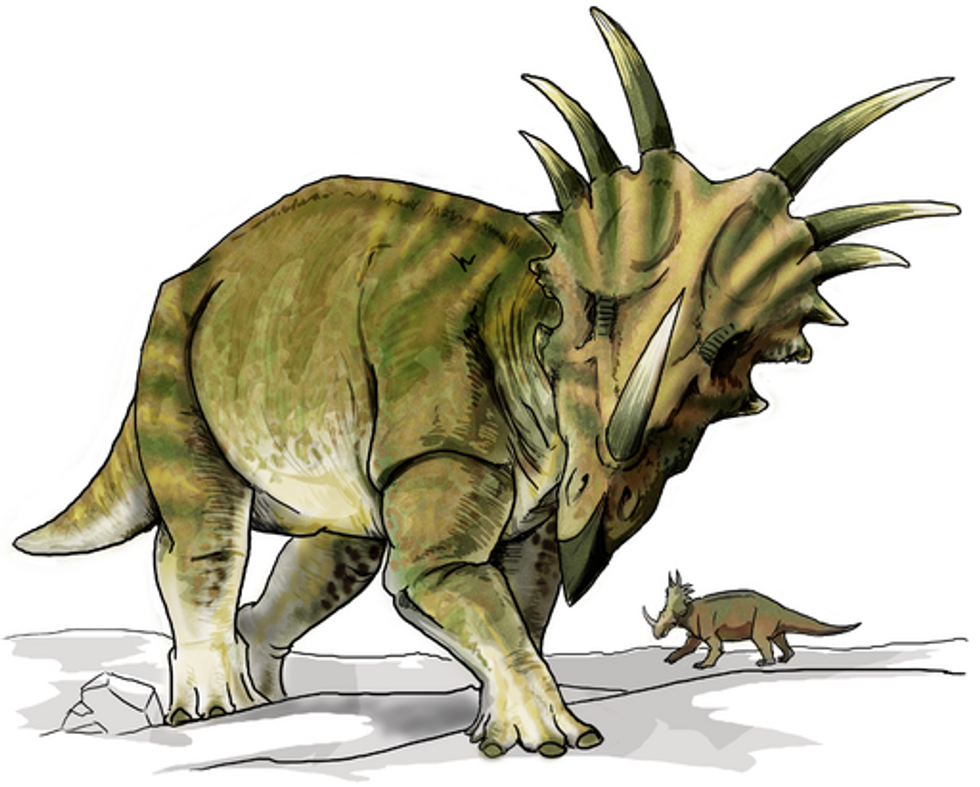The Andean hairy armadillo's scientific name is Chaetophractus nationi. This animal is endemic to Bolivia.
Apart from Bolivia, it is also found in other parts of South America, northern Argentina, Peru, and northern Chile. This animal is considered endangered due to the exploitation caused by humans. Humans hunt them for making musical instruments or for keeping them as a good-luck charm.
This vulnerable species is considered to be nocturnal during the summers and diurnal during the winters. They follow this pattern while foraging to save themselves from the heat that they face during the summers and the cold weather that they face during winter.
Even though they are solitary, females are known to live with their young ones for 50 days after giving birth to the babies.
Mothers stay with their young to feed their pups, to keep them safe from predators, and to teach them to hunt for themselves. Read on to know more interesting facts about the Andean hairy armadillo.
To know more factual details about others from their family, check out pink fairy armadillo and giant armadillo facts too.
Andean Hairy Armadillo Interesting Facts
What type of animal is an Andean hairy armadillo?
The Chaetophractus nationi species are hairy armadillos belonging to the Chlamyphoridae family and genus Chaetophractus of animals.
What class of animal does an Andean hairy armadillo belong to?
This endangered species of Andean hairy armadillos belong to the mammals class of animals.
How many Andean hairy armadillos are there in the world?
As these armadillos are considered a near-threatened and endangered species, the exact number of their population is not known to humans.
Where does an Andean hairy armadillo live?
This animal is found mainly in the regions of South America, Argentina, and Peru. This species is considered to be endemic to Bolivia and the northern parts of Chile.
What is an Andean hairy armadillo's habitat?
This Bolivian species belonging to the genus, Chaetophractus is known to prefer a habitat that is closer to open grasslands in humid or hot regions which are situated at higher altitudes. The range of armadillos is considered to belong to the hot and warm regions of Bolivia and northern Chile.
Who does an Andean hairy armadillo live with?
These animals are considered to be solitary and hence are usually seen alone.
How long does an Andean hairy armadillo live?
These Bolivian endangered species are known to live around 12 to a maximum of 16 years in the wild. They can also live for a maximum of 20 years especially when in captivity as their habitat requirements are carefully looked after when in captivity.
How do they reproduce?
This endangered Bolivian species has its breeding period during the fall. Males and females are polygamous, and solitary, and only get together for mating during the season. Males are known to have the longest reproductive organ of body size among all the mammals on the earth. They do not play a huge role in bringing up their young ones.
Once the female is pregnant, she gives birth to two small babies after two months. It is the mother who takes complete responsibility for feeding and caring for the babies for 50 days. This is the timeline the young ones require to fully develop and live independently.
What is their conservation status?
Over the years, these hairy armadillos are considered to be near-threatened mammals in the Bolivian region. However, the International Union for Conservation of Nature (IUCN) has Not Evaluated these endangered species in their Red List. v
Andean Hairy Armadillo Fun Facts
What do Andean hairy armadillos look like?
Andean hairy armadillos (Chaetophractus nationi) have a thick-plated upper body that looks similar to armor and like that of turtles. These epidermal scales which later turn into plates in their adulthood protect the animal from predators and thorny bushes.
They have a light-brown or yellowish-beige body color and hair on their plates all over the body. These animals have a good tail length of almost 4-5 in (10.2-12.7 cm). Males of this species are known to have the longest reproductive organ about their body length amongst all mammals.
These mammals have teeth that keep on growing until the animal dies. This is a unique feature of these hairy armadillos.
How cute are they?
This Chaetophractus nationi species of animals can be considered cute and highly interesting because of their unique body style.
How do they communicate?
These are tactile creatures and they communicate with other armadillos with the help of touch senses. They might also use chemical identification to understand their territory and nearby threats. They are also known to grunt, scream, or squeal to indicate danger.
How big is an Andean hairy armadillo?
The Andean hairy armadillo (Chaetophractus nationi) is double the size of the pink fairy armadillo with a length of 12.2-16 in (31-40.6 cm). These animals have a tail length of 4-5 in (10.2-12.7 cm).
How fast can an Andean hairy armadillo run?
All armadillos belonging to the different genera can run quickly with a maximum speed of 30 mph (48.2 kph).
How much does an Andean hairy armadillo weigh?
These medium-sized armadillos have a weight range of 4-5 lb (1.8-2.2 kg).
What are the male and female names of the species?
These species do have different names for males and females. Males are called listers and females are called zeds.
What would you call a baby Andean hairy armadillo?
All babies of this armadillo species are known as pups.
What do they eat?
This endangered species of armadillos are omnivorous. Their carnivore diet consists of small vertebrates, maggots, and rotten flesh of birds, snails, earthworms, reptiles, and insects. Their herbivore diet consists of grains, fruits, and plant roots too.
Are they aggressive?
Armadillos are not known to bite or harm humans. Although if they feel threatened they might claw the attacker.
Would they make a good pet?
As each Chaetophractus has a minimum need of 8.4 acres (3.4 ha) as its home range, it is quite difficult to keep this animal as a pet. Additionally, there have not been many reports about domesticating this species at home.
Did you know...
The major threat to these armadillos is humans. This is because their skin is used by humans for creating guitar-like strings for musical instruments.
They also use armadillos for meat purposes, and to make medicine for rheumatism, and a few people also use this species as a good-luck charm. These are some of the many reasons why this species is considered to be endangered.
What sounds do armadillos make?
This animal from Bolivia is known to make grunting sounds. These sounds are similar to that of a pig's grunt. They make these sounds especially while foraging for food.
A screaming hairy armadillo is known to scream as its name suggests. They are said to scream in a high-pitched screeching or squealing note. They usually scream to warn or alarm other armadillos in the area about a possible threat.
What is a family of armadillos called?
Armadillo is a Spanish word that means, 'something small and armored'. This is the perfect name that suits these Andean hairy armadillos. The family of these armadillos is called Dasypodidae which consists of around 20 different armadillo species. Also, a group of family of armadillos is called a roll!
Here at Kidadl, we have carefully created lots of interesting family-friendly animal facts for everyone to discover! Learn more about some other mammals including giant anteaters, or Tibetan sand foxes.
You can even occupy yourself at home by drawing one on our Andean hairy armadillo coloring pages.










